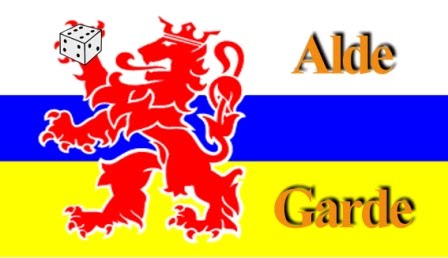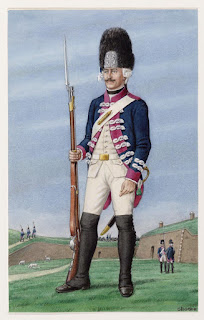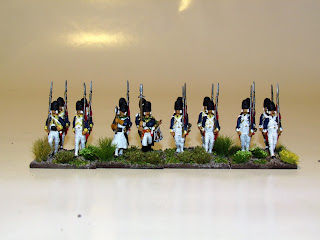I was reading the Reglement issued 28th of February 1772 in which various specific information is given about weapons, colour and sabreknots etc.
So I thought that would be usefull for those who like to paint Dutch infantry in 28mm or 15mm.
Spontoons (officers) and halberds (sergeants)
The Spontoon of the officers should be black and max 7 Rijnlandse Voet or 219,8 cm
There are various models of spontoons, from the Dutch military museum underneath some pictures. The first one had the coat of arms of the Province of Utrecht, the second one the coat of arms of Williem IV or V and the last one of the Province of Zeeland.
The halberds of the sergeants should also be black and max 7 Rijnlandse Voet or 219,8 cm
Sword-knots:
Of the officers: tassel and knot orange/silver
of the sergeants: tassel and knot silver and orange
of the other ranks: tassel white but the knot in various company colours with those of the
first battalion in one full colour, those of the second battalion in two
colours
|
company |
1st bat |
2nd bat |
|
1st company (grenadiers) |
Orange |
Orange and white |
|
2nd company |
Red |
Red and white |
|
3rd company |
White |
Yellow and white |
|
4th company |
Blue |
Green and white |
|
5th company |
Black |
Blue and white |
|
6th company |
Yellow |
Black and white |
|
7th company |
Green |
Red and blue |
The measurements of the Flags:
In the reglement is stated, that new flags should be square with each side in „Rijnlandse“ measurements 3 Voet and 2 Duim (a voet =
31,4 cm, a duim 2,61 cm) so the flags should be 99,42 cm square (or approx 1
metre square).
The flagpole
needs to be in total (incl metal point and shoe) 9 Rijnlandse Voet or 282,6 cm
The flagpole needs to be black.
When you look at the Dutch flags which are in the Rijksmuseum of Amsterdam (and which were pictured in an earlier post) you see that these flags are almost 1 meter square. Some a few cm shorter on one side and sometimes a litle bit wider.
Of the Swiss flags is said, that they are bigger then the Dutch flags so probably these are an older model (or they just didn't conform to the dutch standards).
Clothing/hats officers
Only on hats it is allowed to have gold or silver lace of max one "Rijnlandse duim" of 2,61 cm.


Notice that on the first picture the drumrim is blue white striped, on the second red/white triangels.






















 offficers of Hollandse garde
offficers of Hollandse garde


























